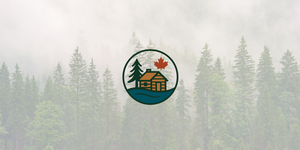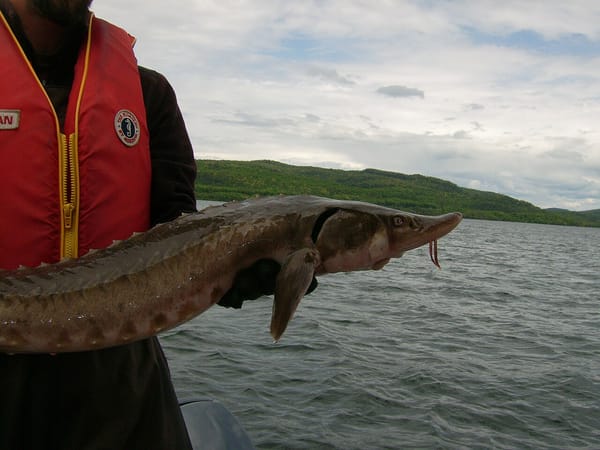There's something magical about stumbling upon a wild saskatoon bush heavy with purple berries during a hike in July. These hardy Canadian natives have been feeding people on the prairies for thousands of years, yet most Canadians don't realize just how remarkable these little fruits really are.

Growing up in Saskatchewan, I've picked countless saskatoons alongside my family, staining our fingers purple and filling ice cream pails (and let's be honest, my stomach) with nature's candy. But it wasn't until I started digging into their history that I discovered these berries hold some fascinating secrets.
1: They're not actually berries at all
Here's a fact that'll win you some trivia points at the next cabin gathering: despite their name and appearance, saskatoon berries are not berries. They're actually pomes, making them cousins to apples and pears rather than blueberries or raspberries. They also continue to ripen after they're picked, unlike other berries.

When you bite into a saskatoon, you're eating a miniature apple-like fruit, with a core containing 5-10 small, soft seeds. This quirk explains their unique almond-like finish – the seeds add the nutty flavour you won't find in true berries. It also is the reason for the higher protein and fat content compared to other small fruits. A blueberry is essentially all flesh, while a saskatoon packs extra nutrition in its tiny seeds.
This rose family connection means saskatoons share growing characteristics with their apple cousins. The plants can live for 30-50 years, and they're incredibly hardy – surviving temperatures down to -50°C to -60°C. No wonder they thrive across the Canadian prairies where winter temperatures would kill most fruit-bearing plants.
2: A berry so beloved it named Saskatchewan's largest city
In August 1883, temperance colonist John Lake arrives at the banks of the South Saskatchewan River, searching for a site to establish a new settlement. Local Indigenous guides hand him branches heavy with purple berries. Lake tastes them and, in a moment of Victorian drama, reportedly exclaims
"Arise Saskatoon Queen of the North!"

Whether this theatrical founding story is entirely accurate remains debated by historians, but the connection between berry and city is undeniable. The name comes from the Cree word "misâskwatômina" (ᒥᓵᐢᑿᑑᒥᓇ), meaning saskatoon berries. Some linguists suggest it translates to "fruit of the tree with many branches," while others propose "the place where willows are cut," referring to harvesting saskatoon branches for arrow-making.
The city of Saskatoon remains deeply connected to its namesake berry. The local baseball team? The Saskatoon Berries. Craft breweries collaborate with them to create Saskatoon Berry Light Lager. A recent community project called Misaskwatomina planted over 440 saskatoon bushes in Victoria Park, reconnecting urban Indigenous youth with this traditional food that literally gave their city its name.
3: They pack more antioxidant punch than wild blueberries
Move over blueberries – there's a new superfruit in town. Recent research reveals saskatoons contain higher antioxidant levels than wild blueberries, strawberries, and raspberries. With 452 mg of total polyphenols per 100g, including 178 mg of anthocyanins, these purple powerhouses deliver serious health benefits.

Indigenous peoples have used saskatoons medicinally for thousands of years. The Blackfoot made tea from leaves and twigs to manage blood sugar levels. Modern science now validates this traditional knowledge – saskatoons inhibit enzymes linked to diabetic complications and help regulate blood glucose.
The berries also outperform blueberries in several key nutrients. They're higher in protein, fat, fiber, calcium, magnesium, and manganese. Their vitamin C content rivals oranges, and they're packed with B vitamins. For Canadians focused on healthy, local food sources, saskatoons offer nutrition that matches or exceeds expensive imported "superfoods" – and they grow wild in your backyard.
4: Indigenous peoples used every part of the plant
The sophistication of traditional saskatoon use reveals just how valuable these plants were to prairie life. Beyond eating fresh berries, Indigenous peoples developed preservation and processing techniques that sustained communities through harsh winters.
Berries were pounded into thick paste, spread on mats, and slowly dried into brick-like blocks that could be stored for months. These berry bricks were chipped and added to soups or reconstituted with water. The premium variety of pemmican – that famous voyageur superfood – always included saskatoons mixed with buffalo meat and fat.

But the berries were just the beginning. Each part of the saskatoon served a purpose:
- Wood: Prized for arrow-making due to its flexibility and strength.
- Bark: Boiled to create eye drops for snow blindness
- Leaves and twigs: Made into medicinal teas
- Young shoots: Used for basket reinforcement and knitting needles
- Branches: Incorporated into canoe construction
When modern foragers pick saskatoons, we're participating in one of North America's oldest food traditions.
5: They're perfectly adapted to Canadian cabin country
If someone designed the ideal fruit plant for Canadian cabin owners, they'd probably reinvent the saskatoon berry. These remarkable shrubs possess adaptations that make them virtually indestructible in our challenging climate.

Their cold tolerance is legendary – not just surviving but thriving after exposure to -50°C. They grow from sea level in Alaska to 3,400 meters elevation in the Rockies. After forest fires, saskatoons are among the first plants to regenerate, actually producing more fruit following burns.
For cabin owners interested in growing saskatoons, they're refreshingly low-maintenance. They tolerate poor soils, require minimal water once established, and rarely need fertilizing. Plant them 3-5 feet apart in full sun, and you'll be harvesting berries for the next three decades. They're self-fertile but produce more fruit with cross-pollination, so plant at least two varieties.
Wildlife love saskatoons as much as humans do. The shrubs provide critical winter food for birds and mammals when other sources are scarce. They host several butterfly species and attract native pollinators.
A berry worth celebrating
Next time you're at the cabin and spot those distinctive oval leaves with teeth only on the upper half, take a moment to appreciate the saskatoon's remarkable story. These aren't just tasty berries – they're living connections to Canadian history, Indigenous wisdom, and prairie ecology.

Saskatoons offer cabin owners a chance to participate in traditions stretching back thousands of years- foraging wild patches along lakeshores or planting your own mini-orchard, . Their incredible hardiness, superior nutrition, and deep cultural roots make them worthy additions to any Canadian outdoor lifestyle.
So raise a glass of saskatoon wine or spread some homemade jam on your morning toast. You're not just enjoying a local fruit. You're tasting a piece of Canadian heritage that's as tough and enduring as the prairie landscape itself.
Now that's something worth saying "Arise Saskatoon!" about.






Join the Conversation